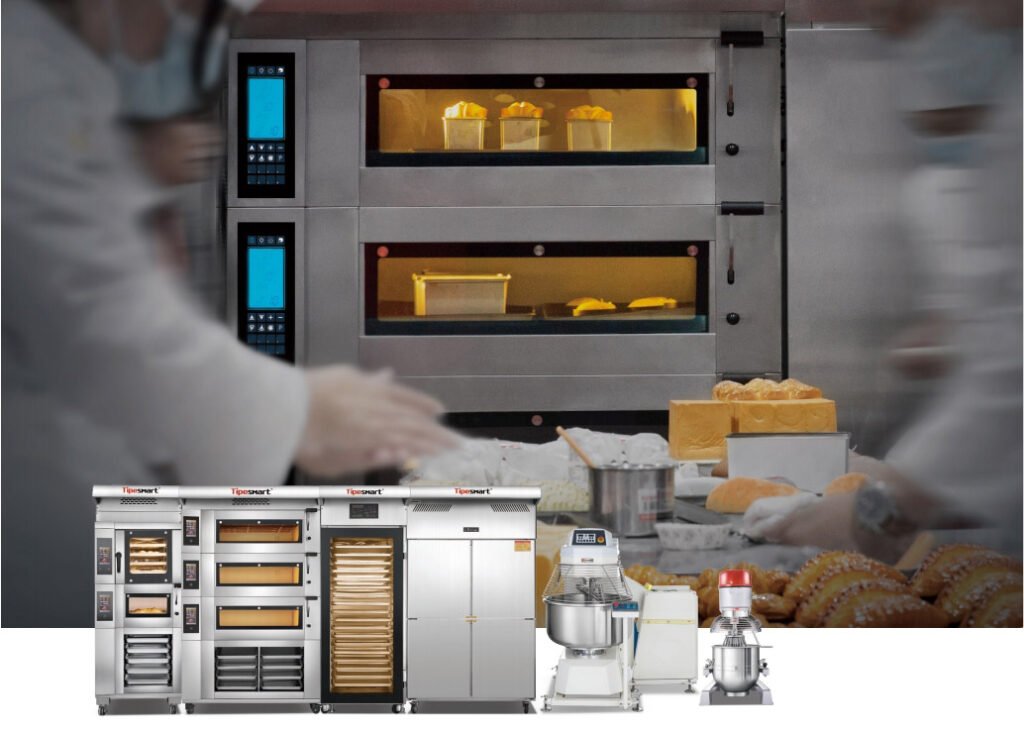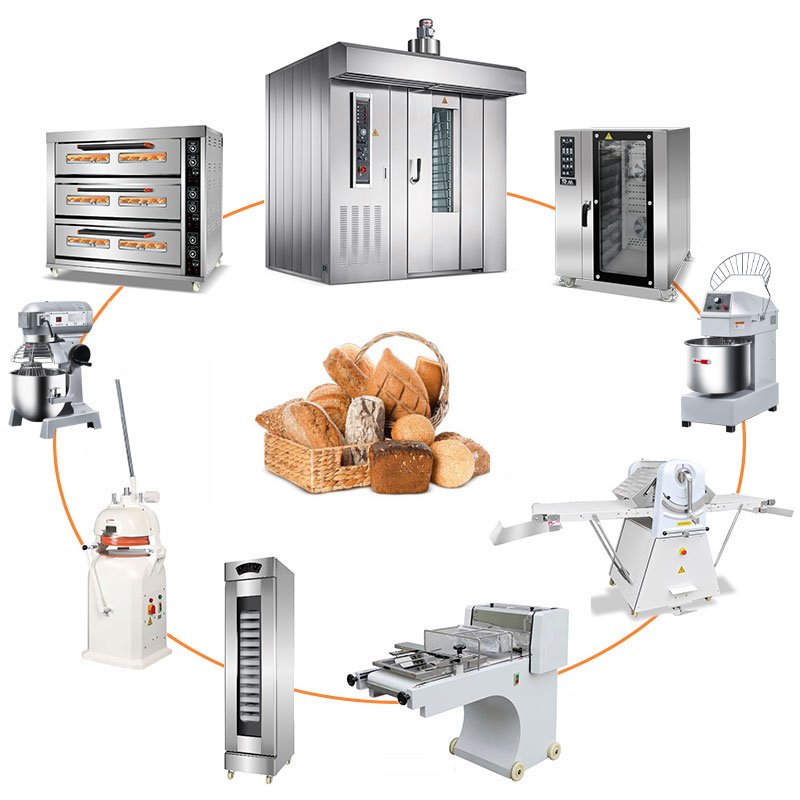A commercial bread oven is a piece of kitchen equipment designed specifically for use in commercial environments to bake bread and other baked goods. These ovens typically feature high temperatures and precise temperature control capabilities, as well as an efficient hot air circulation system to ensure the quality and consistency of baked goods.
Key features of commercial bread ovens include:
- Temperature control: Commercial ovens usually have more precise temperature control systems that can adjust the temperature according to different baked goods to ensure the best baking effect of the food.
- Temperature range: wide temperature adjustment range to meet different baking needs.
- Even heating: The hot air circulation system inside the oven ensures even baking.
- Timers and controllers: Precisely control baking time and improve efficiency.
- Capacity and size: In order to meet the needs of commercial production, commercial ovens usually have larger capacity and their sizes are adjusted accordingly to meet the needs of baking multiple breads or foods at the same time. For example, according to the flow of people in the store and the baking speed, choose an oven of suitable size, such as one layer with one tray, one layer with two trays, two layers with four trays, two layers with six trays, three layers with six trays, and three layers with nine trays.
- Energy options: Commercial ovens may support multiple energy options, such as electricity, gas, etc., to suit different usage environments and cost considerations.
- Energy saving: The hot air generated by commercial ovens will remain inside the oven and will not be lost, so the baking speed of commercial ovens is very fast, saving a lot of energy.
- Comfort: The noise produced by the commercial oven is very small when in use, which will not affect our other work during use. Its temperature can also be adjusted according to the temperature you need, which is very simple and convenient to use.
- Material: Most ovens use national standard stainless steel on the outside and 304 stainless steel on the inside, and the parts that come into contact with food are all food grade 304 stainless steel.
Commercial ovens are electrical appliances used to bake or roast food. They use the radiant heat from electric heating elements to bake food. Commercial ovens are relatively large and can bake more food at a time. Commercial ovens often need to be displayed, so the doors are mostly made of glass.
- Food drying: Some of our daily food will become damp after a period of time, which will affect the food and change the taste. The oven can put the damp food into the oven and evaporate the water in the food with high temperature, so that the food will become dry again.
- Safety and functionality: Commercial ovens are often equipped with safety features, such as automatic shutoff functions and overheating protection, to ensure safe operation. In addition, some ovens offer additional functions, such as steam functions, for baked goods that require a moist environment.
- Durability and maintenance: Commercial equipment needs to be able to withstand frequent use, so commercial bread ovens are usually designed to be durable and easy to maintain to ensure long-term commercial operation.
- Steam function: suitable for foods that require steam baking.
- Program settings: For frequently baked products, the time and temperature can be adjusted with one button.
In summary, commercial bread ovens are baking equipment designed for commercial environments, with high performance and reliability to meet the needs of large-scale production and high-quality baked goods.
The basic function of a commercial oven is to bake and roast food. Whether it is bread, cake or pizza, a commercial oven can easily complete it. Commercial ovens generally have multiple shelves and can bake multiple courses at the same time.
In the world of commercial baking, an efficient and durable oven is the key to success. Choosing an energy-efficient oven can save energy costs in the long run.
How do we maintain the oven on a daily basis?
- Daily maintenance content
1. Clean the furnace body after use every day.
2. Clean the dough remaining in the furnace.
- Weekly maintenance content
1. The furnace needs to be thoroughly cleaned once a week (after the furnace cools down).
2. Clean the furnace door glass (clean after the glass cools down): spray a small amount of glass cleaner and wipe it clean with a clean towel.
3. Cleaning the decorative panel: Do not use hard objects such as steel wool to wipe the decorative panel. Use a clean towel with a small amount of clean water (no dripping water) to wipe the decorative panel. Use a dry towel to wipe the temperature control panel. Do not use water to wipe it.
- Monthly maintenance content
1. Adjust the machine level: The machine will inevitably move after use, so it must be readjusted after a period of use to avoid affecting the baking quality.
2. Check the air tightness of the furnace door.
3. Clean the electrical parts: Open the maintenance door, use a brush to clean the dust on the electrical components, and reinforce the components one by one.
4. Check the performance of each electrical component and whether the buzzer alarm is normal.
5. Leakage protection test: When the power is on, press the leakage test button on the right side of the leakage protector to see if the leakage switch trips in time. When resetting, you need to press the reset button on the leakage switch before opening the gate.


